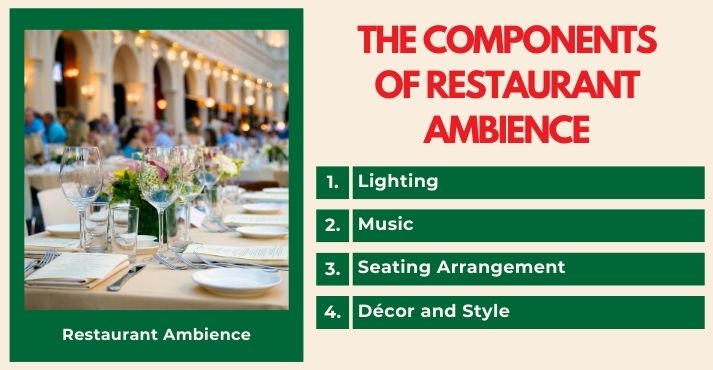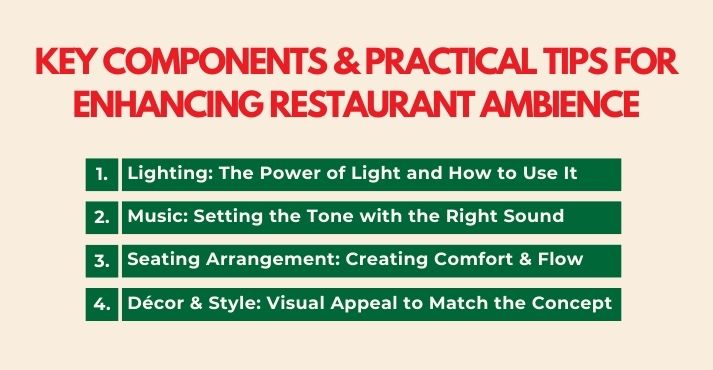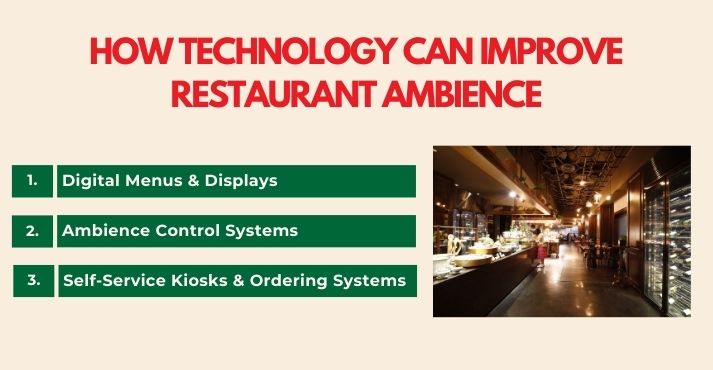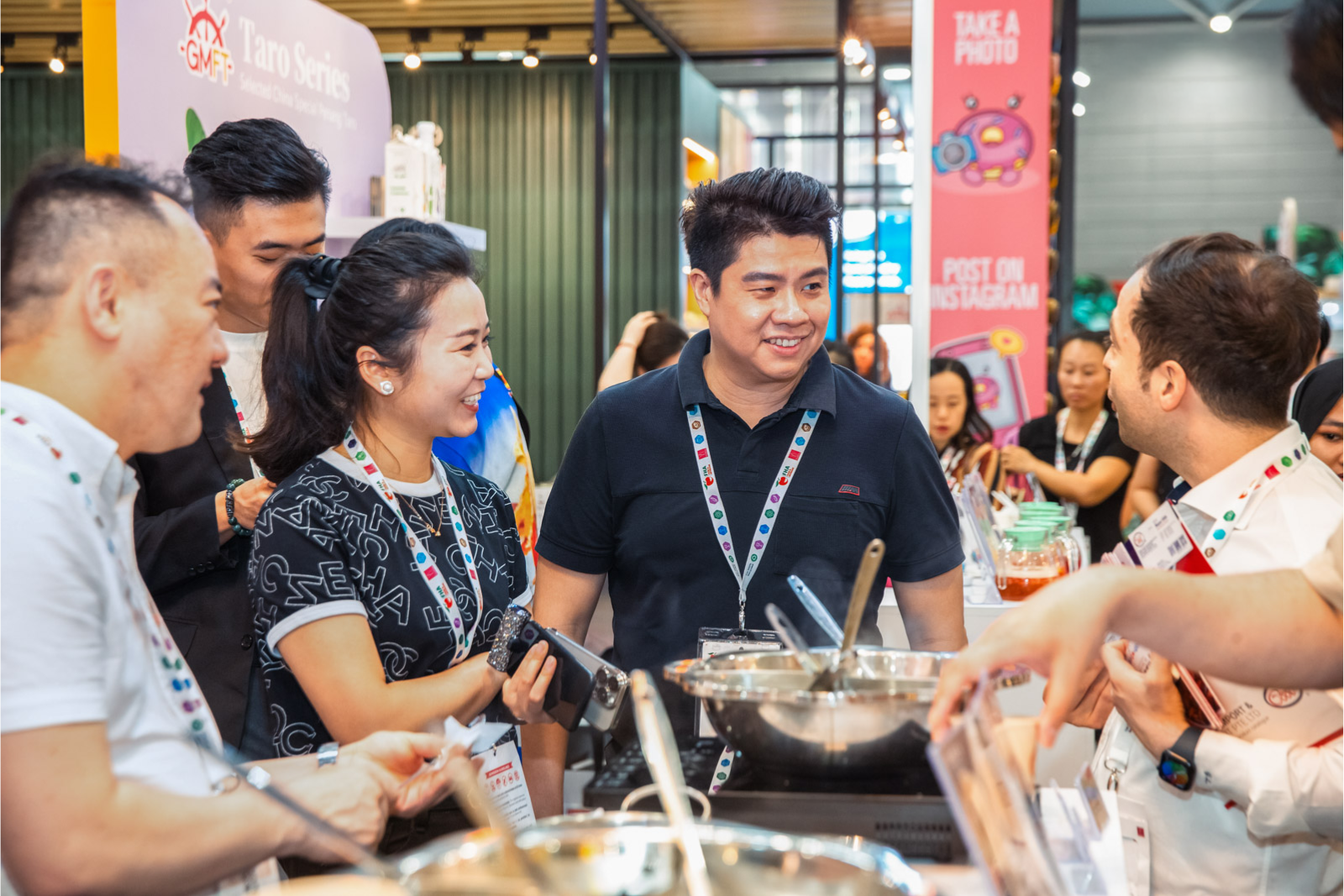Ever walked into a restaurant and instantly felt like you didn’t want to stay? Maybe the lighting was too bright, the music didn’t fit the vibe, or the whole place felt off.
Now think of when you walked into a spot that felt just right. You hadn’t even looked at the menu yet, but you already knew you were in for a good time. That feeling comes from the ambience.
Ambience isn’t just about decorations or what’s hanging on the walls. The lighting, the music, the layout of the tables, the noise level, the colors, and the little details make a place feel cozy, calm, lively, or fun. It’s the mood that greets people when they walk in and sticks with them long after they leave.
Restaurants live or die by how people feel in them. Even if the food is great, a cold, loud, or uncomfortable space can leave a bad taste. On the flip side, a warm, well-thought-out space can make the same meal feel even better.
So, how important is the ambience of a restaurant in its success? It can be why people stay longer, order more, return often, or tell their friends about it. It’s not something extra but a part of the experience, which matters more than many realize.
The Components of Restaurant Ambience

Food and service are important, but how a restaurant feels often leaves a lasting impression. Ambience includes everything from lighting and music to seating, décor, and the atmosphere. These elements work together to influence how guests feel when they walk in.
The setting can make a big difference in the restaurant industry, where diners have endless options. Let’s explore the main features that help create a space where people feel comfortable and want to return:
1. Lighting
Lighting sets the mood the moment someone walks through the door. Soft, warm lighting can make a space feel cozy and intimate, perfect for dinner dates or relaxed evenings. Bright, natural light works better for brunch spots or casual daytime dining.
Finding the right balance between natural and artificial lighting helps create the perfect restaurant atmosphere.
Harsh lights can make a space feel cold, while overly dim settings can be uninviting. Good lighting should flatter the food, make guests feel at ease, and match the tone of the place.
2. Music
Music adds personality without needing attention. Fast-paced playlists work well in casual, high-energy places. Softer music suits fine dining, encouraging guests to relax and enjoy their time.
When matched with the restaurant’s theme, background music helps fill quiet moments, reduces unwanted noise, and creates a pleasant rhythm to the dining experience.
3. Seating Arrangement
A thoughtful seating layout helps with both comfort and flow. Tables packed too tightly can feel stressful, while too much space can make a room cold. The right arrangement lets guests relax without feeling crowded and allows staff to move quickly.
In a full-service restaurant, seating should also support different types of groups, whether it’s a quiet dinner for two or a larger gathering. Comfort isn’t just about the chairs but also about spacing, layout, and how naturally everything fits together.
4. Décor and Style
Décor tells guests what kind of experience to expect. Whether it’s modern, rustic, traditional, or themed, the look of a place should reflect its concept. From wall art to furniture to color choices, each detail adds to the overall feel and helps tell the restaurant’s story.
For example, a restaurant serving classic home-style dishes might feel more welcoming with wood accents and warm tones. A seafood restaurant might lean into nautical themes. The décor should match the food and tone to build a cohesive restaurant atmosphere.
Unsurprisingly, 90% of adults say they enjoy going to restaurants, and it’s not just about the food. It’s about the whole experience. Ambience plays a big part in that.
When people feel comfortable, relaxed, and welcome, they’re more likely to stay longer, return often, and recommend the place to others.
How Ambience Influences Customer Perception and Behavior

Ambience guides how guests feel and act inside a restaurant. The space can put them at ease or turn them away from the moment they walk in. It creates the right mood, supports the dining experience, and builds customer trust when done well.
1. First Impressions Matter
The moment a guest steps inside, they begin forming an opinion. Cleanliness, layout, lighting, and scent affect what they expect next. If something feels off, such as a dim entryway, a cluttered space, or loud music, it can cloud the rest of the visit.
But when a place gets it right from the start, it sticks. A welcoming entry, good lighting, and a calm setting can ease people in. An excellent first impression doesn’t just lead to satisfaction; it encourages word of mouth.
72% of diners say they’ll tell six or more people when their visit starts strong. That impact speaks for itself, especially in restaurants where every detail counts.
A well-maintained space, a friendly greeting, and clear signage can immediately tell customers they’re in good hands.
On the other hand, signs of neglect, like sticky floors, cluttered waiting areas, or loud kitchen noise, can create doubt. The first few seconds inside the door can tip the experience one way or another.
2. Customer Comfort and Satisfaction
Comfort affects how guests feel during their meal. If the table is too close to others, the lighting is too bright, or the music is too loud, the focus shifts from the food to the surroundings. These small irritations can shorten visits or leave a bad impression.
On the other hand, thoughtful lighting, enough personal space, and controlled sound levels help people relax and enjoy the experience. These factors influence how they eat and how long they stay.
Customers are more likely to return and share positive feedback when the ambience and customer experience come together comfortably and invitingly.
Temperature, seating softness, acoustics, and even scent control affect the overall comfort. Guests settle in when the space feels calm, balanced, and clean.
And in many cases, a comfortable guest is more likely to order dessert, linger over drinks, or plan their next visit before they’ve even left.
3. Setting the Right Expectations
Ambience gives guests an immediate sense of what to expect before looking at the menu. People pick up on cues quickly.
Cloth napkins and candlelight suggest formality, while paper menus and casual seating lean more laid-back. These details tell customers what kind of service and pricing to expect.
When ambience lines up with the menu and service, it creates consistency. A mismatch, such as fast food in a setting that feels too formal, can confuse guests or cause disappointment. The goal is to ensure every part of the experience points in the same direction.
Lighting, table settings, staff attire, and even the scent in the air all send signals. For example, soft jazz and moody lighting suggest an intimate night out, while pop music and bright colors fit better in a casual lunch spot.
The right environment sets up the right mindset, helping to create a more immersive dining experience from the start.
4. Influencing Customer Decisions
Guests don’t just respond to the menu; they respond to the space. A welcoming layout and calm mood can make people stay longer or order more. Dim lighting might slow down the pace. Upbeat music might increase table turnover. These responses are often subtle but meaningful.
The way a space feels can influence ordering behavior. Cozy corners can encourage guests to share appetizers or stay for an extra drink.
A well-lit menu board and fast-paced music might prompt quicker decisions. Even the sound level of the room can affect how much people speak, linger, or eat.
This is where the impact of restaurant ambience shows up in real terms, including average ticket size, how long guests stay, and whether they order add-ons.
Creating the right environment isn’t just about looks. It supports the flow of the service and influences how people move through and interact with the space.
Ambience and Its Effect on Restaurant Success
Ambience isn’t just about aesthetics. It has a direct impact on how a restaurant performs. When every element of the space is intentionally designed, it supports a better guest experience and builds stronger customer relationships.
Brand Identity
The ambience of a restaurant reinforces its personality. A cozy café with warm lighting and mismatched furniture tells a different story than a luxury restaurant with minimalist decor and soft classical music.
When customers walk in, they should instantly understand the kind of experience they are about to have, whether casual or fine dining. The ambience should feel consistent with the restaurant’s overall theme, price point, and values.
Customer Loyalty
A welcoming atmosphere makes people feel at ease and more likely to return. This familiarity helps build habits, especially in full-service restaurants where customers often seek comfort, recognition, and a personal touch.
Whether it is a corner booth with the right lighting or a favorite playlist in the background, these subtle cues leave a lasting impression that keeps guests returning.
Customer Reviews
Ambience affects how people talk about their dining experiences. Online reviews often mention the lighting, noise levels, cleanliness, and general vibe, sometimes even more than the food.
Positive mentions of ambience help build a restaurant’s reputation through word of mouth and online platforms. These days, a space that feels inviting can directly improve ratings and referrals.
Competitive Advantage
In the crowded food industry, ambience helps a restaurant stand out. Two places might serve the same type of food, but the one with the more memorable atmosphere is often the one people choose.
Ambience in the foodservice industry is not just an extra touch. It can be the deciding factor when customers are choosing where to dine. A thoughtfully curated space gives restaurants a clear edge by offering something unique that others may lack.
Key Components and Practical Tips for Enhancing Restaurant Ambience

Ambience comprises many parts that work together to create a memorable dining experience. From lighting to décor, each detail influences how guests feel and enjoy their time.
Paying attention to these components can improve customer satisfaction and support the smooth operation of the dining area.
1. Lighting: The Power of Light and How to Use It
Lighting affects mood more than many realize. Natural light creates a bright, energetic atmosphere during the day, while soft artificial lighting can make evenings feel warm and intimate.
When choosing lighting, consider the time of day and the desired ambience. For example, brighter lights work well for casual lunch spots, while dimmer, warmer tones suit fine dining. Adjustable lighting options offer flexibility for different occasions and seasons.
2. Music: Setting the Tone with the Right Sound
Music influences the dining experience by matching the restaurant’s style and energy. Fast-casual restaurants benefit from upbeat, lively music that keeps energy high and service quick.
Fine dining venues often use slower, soothing tunes to encourage guests to relax and enjoy their meal. Selecting the right music style to match the restaurant type can enhance how customers feel and interact with the space.
3. Seating Arrangement: Creating Comfort and Flow
How tables and chairs are arranged impacts guest comfort and the efficiency of staff movement. Cozy corners can make small groups feel special, while open layouts help larger crowds feel less cramped.
Thoughtful seating arrangements improve the guest experience and allow servers to work efficiently without disturbing diners. This balance supports a positive flow from the dining room to the commercial kitchen.
4. Décor and Style: Visual Appeal to Match the Concept
Décor is a big part of how guests understand a restaurant’s identity. Whether the style is traditional, modern, or rustic, the décor should reflect the restaurant’s theme and create a welcoming atmosphere.
Simple upgrades like adding artwork, plants, or updated table settings can improve how decor affects customer satisfaction without a significant investment. These touches enhance the food and beverage experience by making the environment feel complete and inviting.
How Technology Can Improve Restaurant Ambience

Technology offers new ways to enhance restaurant atmosphere while improving the guest experience. When used thoughtfully, it supports the role of ambience in restaurant success by making the space feel modern and efficient without losing its character.
1. Digital Menus and Displays
Digital kiosks, LED screens, and interactive displays provide clear, easy-to-read information to customers. According to one study, 74% of restaurant customers say having an effective menu display is a top priority.
These technologies can highlight specials, promote food and beverage options, and customize menus based on time or customer preferences, improving convenience and engagement.
2. Ambience Control Systems
Smart lighting and sound systems adjust automatically based on the time of day or the mood the restaurant wants to create. For example, lighting can become softer in the evening while music volume lowers to encourage a relaxed dining environment.
These control systems allow restaurants to maintain a consistent atmosphere that fits the moment and guest expectations.
3. Self-Service Kiosks and Ordering Systems
Self-service kiosks and food ordering systems offer guests more control while reducing wait times during busy periods.
According to a Harvard Business Review study, restaurants using self-ordering kiosks saw a 20% increase in revenue compared to those relying solely on human cashiers.
This technology improves the service flow and fits naturally into the ambience by combining efficiency with a modern dining experience.
Conclusion
Ambience has a strong impact on a restaurant’s overall success. It influences how guests feel when they walk in, affecting their comfort, mood, and enjoyment throughout the meal.
A well-designed atmosphere can increase customer satisfaction, encouraging repeat visits and positive recommendations. For restaurant owners, paying close attention to ambience is essential.
Regularly evaluating elements such as lighting, music, seating, and décor helps ensure the restaurant meets the expectations of its guests and remains successful within the restaurant industry.
Small changes can make a big difference in creating a memorable dining experience that attracts and keeps customers.













